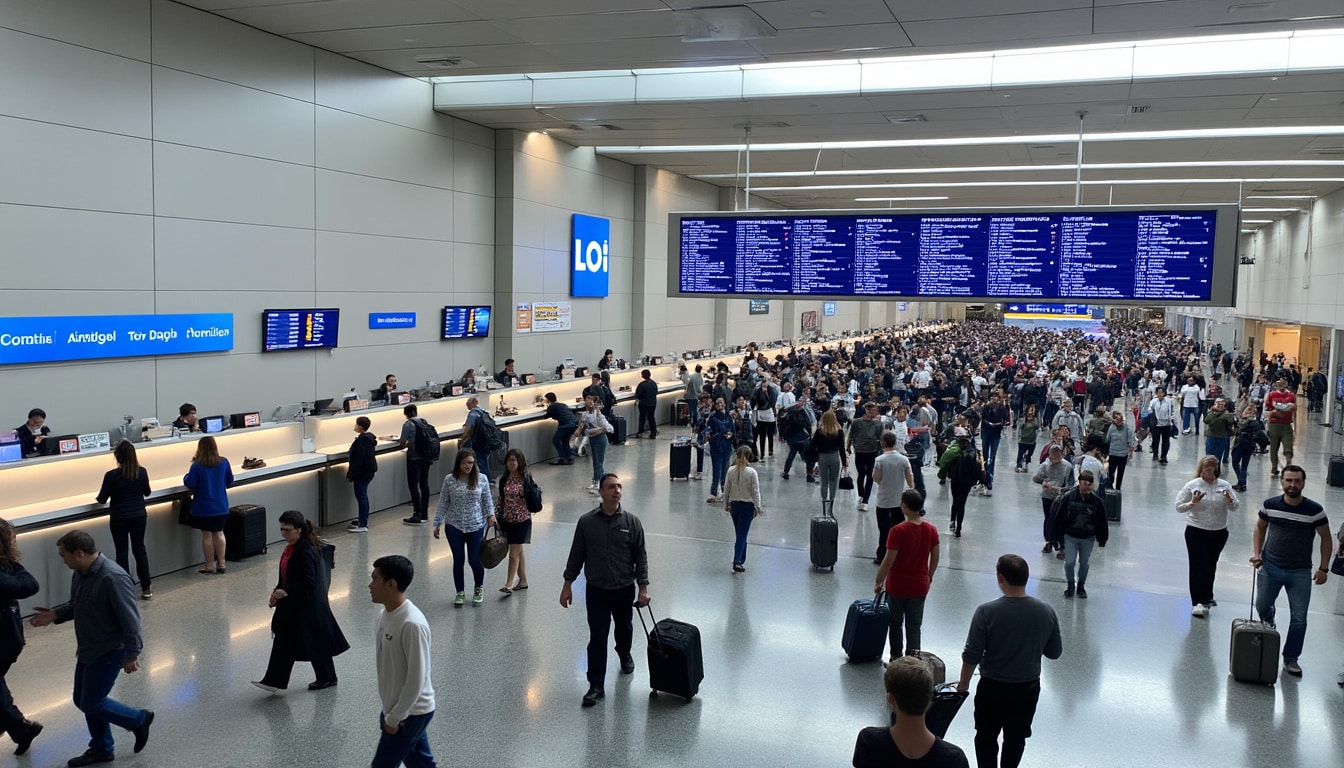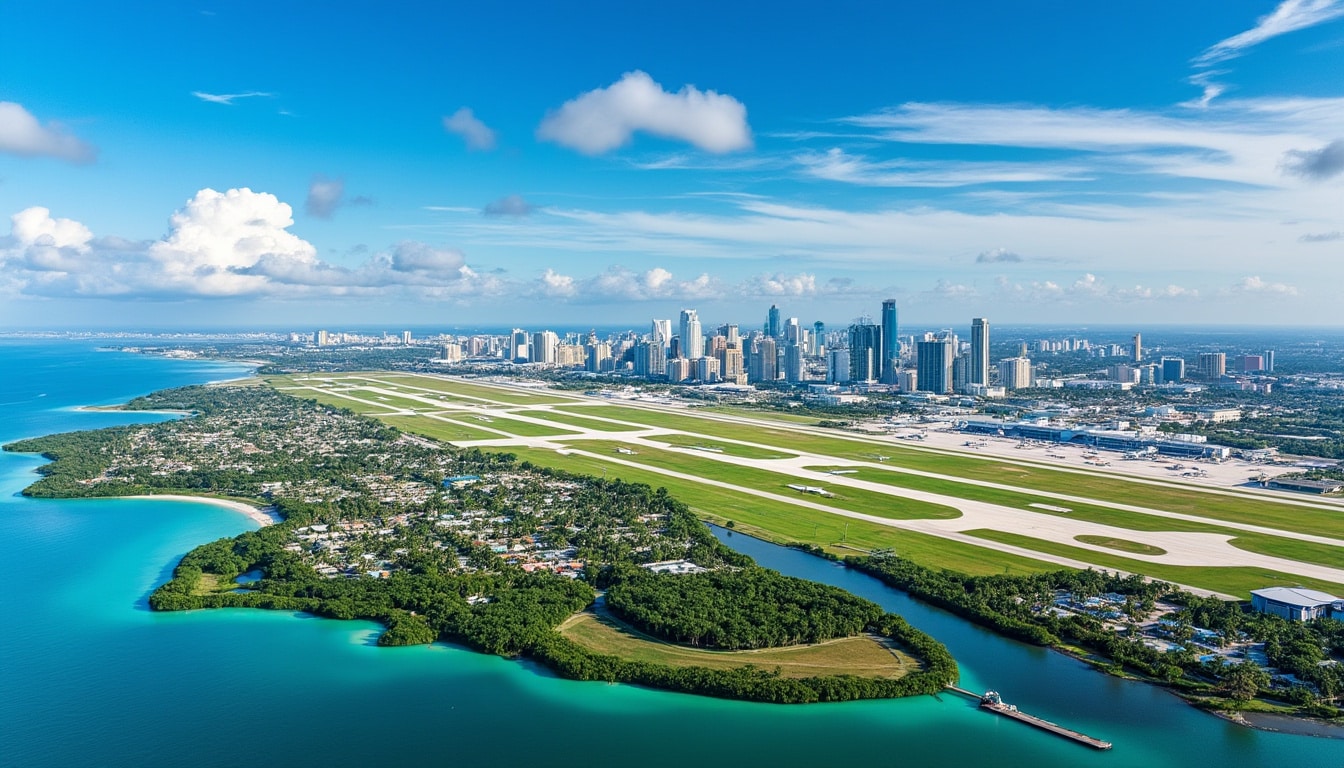Fort Lauderdale, known for its stunning beaches and vibrant nightlife, is not only a popular vacation destination but also a significant hub in Florida’s aviation network. For travelers visiting or commuting through this bustling city, understanding its airport infrastructure is crucial. In this comprehensive guide, we delve into the details of Fort Lauderdale’s airport system, examining how these vital transport hubs cater to millions of passengers each year and contribute to the city’s growing economy. Whether you’re planning a sun-soaked getaway or a business trip, the logistics of air travel in Fort Lauderdale are essential knowledge.
Exploring Fort Lauderdale-Hollywood International Airport (FLL)
The Fort Lauderdale-Hollywood International Airport (FLL) is undoubtedly the centerpiece of Fort Lauderdale’s aviation facilities. Positioned just a short drive from downtown, it’s a convenient gateway for both international and domestic travelers. Serving a massive 35 million passengers annually, FLL is a bustling airport hub known for its efficiency and accessibility. This airport is a key player in Florida’s aviation ecosystem and ranks as the third busiest airport in Florida.
Facilities and Services at FLL
Fort Lauderdale-Hollywood International Airport boasts four terminals, each equipped with amenities designed to enhance the passenger experience. From dining options offering a range of international cuisines to duty-free shops and relaxing lounges, FLL ensures a comfortable journey for travelers. Additionally, the airport provides efficient ground transportation options, such as car rentals and shuttle services, to facilitate easy access to the city.

Airlines Operating from FLL
FLL is a hub for several airlines, including JetBlue Airways, Spirit Airlines, and Southwest Airlines. These airlines provide extensive route networks, connecting Fort Lauderdale to numerous destinations across the globe. Notably, FLL is a critical base for low-cost carriers, making it a preferred airport for budget-conscious travelers. With comprehensive services and competitive prices, flying through FLL offers great value to passengers.
Strategic Importance of FLL
The strategic location of FLL contributes immensely to its significance. It’s situated near major attractions and businesses, facilitating efficient travel for both tourists and professionals. The airport’s proximity to Port Everglades also makes it an ideal choice for cruise passengers wanting a seamless transfer experience. This integration with other key transport networks amplifies the airport’s role in supporting Fort Lauderdale’s economic and tourism growth.
For more insights into the various airlines flying in and out of FLL, consider exploring this detailed guide on airline options.
Fort Lauderdale Executive Airport: A Niche for Business Aviation
In addition to the bustling FLL, Fort Lauderdale is home to another important aviation facility, the Fort Lauderdale Executive Airport. This airport predominantly serves general aviation, catering to private and corporate flights. It provides a convenient and efficient platform for business travelers who are looking to avoid the hustle and bustle of larger commercial airports.
Facilities and Operations
Fort Lauderdale Executive Airport offers exceptional facilities tailored to the specific needs of private and business aviation. It features upscale charter services, aircraft maintenance, and executive lounges, ensuring a premier travel experience. With faster processing times and personalized services, this airport is ideal for those prioritizing privacy and efficiency.
Advantages for Business Travelers
The Executive Airport is strategically located just minutes from downtown Fort Lauderdale, making it a preferable choice for time-sensitive business travelers. It helps bypass congestion, offering more flexible flight schedules and allowing greater control over travel itineraries. Moreover, the airport plays a crucial role in supporting the local economy by facilitating corporate travel and investments.
Community Engagement and Development
This airport is also actively involved in community engagement through various programs aimed at fostering relationships with local businesses and residents. Its development initiatives focus on sustainability and noise reduction, ensuring harmonious coexistence with its surroundings. This proactive approach not only enhances the airport’s stature but also ensures continued support from the community.
For an in-depth view of the role and operations of Fort Lauderdale Executive Airport, visit this comprehensive airport overview.
Nearby Alternatives: Miami and West Palm Beach Airports
While Fort Lauderdale’s primary airports offer comprehensive services, travelers also have nearby alternatives such as Miami International Airport (MIA) and Palm Beach International Airport (PBI). These facilities enhance travel flexibility, providing more options for both domestic and international flights.
Miami International Airport
MIA is the largest airport in Florida, renowned for its extensive global connectivity. It’s a primary hub for American Airlines and serves as a transatlantic hub connecting the U.S. with Latin America and beyond. MIA’s vast network provides additional flight choices for travelers originating from or destined for Fort Lauderdale.
Palm Beach International Airport
Located approximately 50 miles north of Fort Lauderdale, PBI offers a less crowded option compared to its busier neighbors. It’s preferred for its ease of access and efficient operations. The airport serves multiple carriers, including Delta Air Lines and United Airlines, making it a convenient alternative for those in the vicinity.
- ✈️ MIA: Extensive international routes, majorly American Airlines
- ✈️ PBI: Proximity advantage, efficient and less crowded
These airports work in synergy, providing a robust network that supports Florida’s bustling tourism industry. They cater to diverse travel needs, ensuring travelers have various options for their unique itineraries.
Boca Raton Airport: A Closer Look
Just 20 miles away from Fort Lauderdale, the Boca Raton Airport is another key fixture in South Florida’s aviation landscape. While mainly used for general and business aviation, this airport has a notable presence due to its proximity to numerous corporate headquarters and high-end residences.
General Aviation at Boca Raton
Boca Raton Airport is a General Aviation facility, which means that it does not handle as many commercial flights as its larger counterparts. It primarily serves private and corporate jets, offering facilities that include top-tier maintenance services and elite passenger lounges.
Economic Impact and Development
This airport contributes significantly to the local economy by providing jobs and facilitating business travel. It’s continually expanding its facilities to keep up with growing demand and evolving aviation technologies. Hosting various air shows and community events, the Boca Raton Airport also plays a crucial role in local community engagement.
Convenience and Accessibility
For those traveling to or from the Boca Raton area, this airport offers an ideal alternative to the larger commercial airports. It allows for more flexibility and privacy with its streamlined operations. Business travelers particularly value its convenient location, which minimizes travel times and maximizes productivity.
For a detailed guide on using airports efficiently in the Fort Lauderdale area, check out this airport efficiency guide.
Supporting Infrastructure: Transportation and Amenities
Fort Lauderdale’s airport network is well-supported by excellent transportation infrastructure, making it easier for travelers to transition from air to ground transport seamlessly. The city provides various options, including taxis, ride-sharing services, and shuttles, to ensure connectivity between airports and urban centers.
Transportation Options
For passengers arriving in or departing from Fort Lauderdale airports, there are numerous ground transportation choices. These include:
- 🚖 Taxis and Cabs for direct routes
- 🚌 Shuttle services connecting major transport hubs
- 🚙 Car rentals offering flexibility for longer stays
- 🛴 Public transportation for budget-friendly options
Airport Amenities
The airports in and around Fort Lauderdale boast a variety of amenities designed to cater to travelers’ needs. From business centers and Wi-Fi access to recreational spaces like lounges and shopping areas, these facilities aim to provide a comprehensive and enjoyable experience.
A detailed map and description of the airport amenities can be found in this guide to Fort Lauderdale flights and facilities.
Future Developments
Looking into the future, Fort Lauderdale plans to further enhance its airport services to accommodate growing traffic and improve passenger experience. Initiatives include terminal expansions, technological upgrades for faster processing, and sustainable practices to reduce carbon footprints. These developments aim to maintain Fort Lauderdale’s status as a world-class travel destination.
Explore future projects and the strategic vision for Fort Lauderdale’s aviation system in the upcoming roadmap linked here.
Frequently Asked Questions (FAQ)
- How many airports are in Fort Lauderdale? Fort Lauderdale has five notable airports, including the major Fort Lauderdale-Hollywood International Airport.
- What is the main airport in Fort Lauderdale? The main airport is the Fort Lauderdale-Hollywood International Airport (FLL), crucial for both domestic and international flights.
- Which airlines operate from FLL? Airlines including JetBlue Airways, Spirit Airlines, Southwest Airlines, and more offer extensive services from FLL.
- What alternatives are there to FLL? Nearby alternatives include Miami International Airport and Palm Beach International Airport.
- How can I travel between Fort Lauderdale’s airports? Ground transportation options such as taxis, shuttle services, and public transit facilitate easy commutes between airports and the city center.

